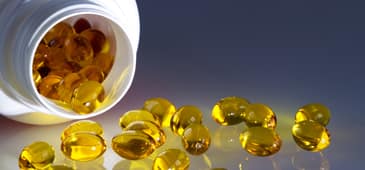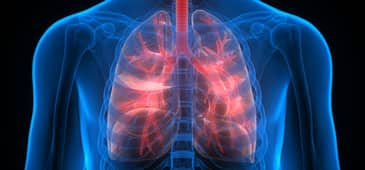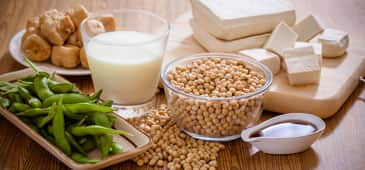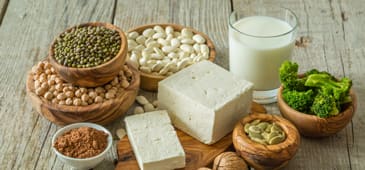
What's Hot
What's Hot
News flashes are posted here frequently to keep you up-to-date with the latest advances in health and longevity. We have an unparalleled track record of breaking stories about life extension advances.
Research explores mechanisms, safety of vitamin C cancer treatment
 March 31 2017. On March 30, 2017, Cancer Cell reported the outcome of a safety trial that found only modest side effects in association with intravenous high doses of vitamin C for the treatment of brain cancer. The article also reports a mechanism for the vitamin’s ability to selectively target cancer cells as opposed to healthy cells.
March 31 2017. On March 30, 2017, Cancer Cell reported the outcome of a safety trial that found only modest side effects in association with intravenous high doses of vitamin C for the treatment of brain cancer. The article also reports a mechanism for the vitamin’s ability to selectively target cancer cells as opposed to healthy cells.
The trial included 11 patients being treated with radiation and chemotherapy for glioblastoma multiforme. Participants received three infusions of vitamin C per week for two months followed by two infusions per week for seven months with the goal of raising vitamin C blood levels to 20,000 micromoles per liter. The treatment was found to be well tolerated. Side effects included frequent bathroom trips, dry mouth, and rare, transient episodes of high blood pressure.
"This is a significant example of how knowing details of potential mechanisms and the basic science of redox active compounds in cancer versus normal cells can be leveraged clinically in cancer therapy," commented co-senior author Douglas Spitz. "Here, we verified convincingly that increased redox active metal ions in cancer cells were responsible for this differential sensitivity of cancer versus normal cells to very high doses of vitamin C."
"This paper reveals a metabolic frailty in cancer cells that is based on their own production of oxidizing agents that allows us to utilize existing redox active compounds, like vitamin C, to sensitize cancer cells to radiation and chemotherapy," added co-author Garry Buettner.
"The majority of cancer patients we work with are excited to participate in clinical trials that could benefit future patient outcomes down the line," co-senior author Bryan Allen remarked. "Results look promising but we're not going to know if this approach really improves therapy response until we complete these phase II trials."
—D Dye
Omega 3 supplementation associated with increased irisin, lower CRP
 March 29 2017. A randomized, double-blind trial reported in the January 2017 issue of the Archives of Iranian Medicine found an association among coronary artery disease patients between supplementation with omega 3 fatty acids and an increase in irisin: a myokine released from the muscles during physical activity that helps transform white fat into brown fat that continues to burn energy after exercise. Because of its ability to increase energy expenditure, irisin has gained interest as a treatment for type 2 diabetes and related disorders.
March 29 2017. A randomized, double-blind trial reported in the January 2017 issue of the Archives of Iranian Medicine found an association among coronary artery disease patients between supplementation with omega 3 fatty acids and an increase in irisin: a myokine released from the muscles during physical activity that helps transform white fat into brown fat that continues to burn energy after exercise. Because of its ability to increase energy expenditure, irisin has gained interest as a treatment for type 2 diabetes and related disorders.
The trial included 45 men with more than 50% stenosis documented in one or more major coronary arteries. Participants received a placebo or 720 milligrams (mg) eicosapentaenoic acid (EPA) plus 480 mg docosahexaenoic acid (DHA) twice daily for 8 weeks. Serum levels of irisin, high-sensitivity C-reactive protein (CRP, a marker of inflammation), and other factors were assessed before and after the treatment period.
At the end of 8 weeks, participants who received omega 3 experienced an average increase in serum irisin from 2.08 mcg/mL to 2.66 mcg/mL, while the placebo group experienced a decline. C-reactive protein was reduced from 2.96 mg/L to 1.86 mg/L in the omega-3 group while remaining essentially unchanged in the placebo group. Additionally, omega-3 supplementation was associated with a decrease LDL cholesterol compared to those who received a placebo.
“To the best of our knowledge, this study is the first clinical trial investigating the effects of omega 3 fatty acids supplementation on serum irisin concentration in male coronary artery disease patients,” Fahimeh Agh, MSc, and colleagues announce. “As the mechanisms causing atherosclerosis are the same among patients with cardiovascular disease and the impacts of omega-3 fatty acids on these patients are similar, the results of the current study can be generalized to all men with cardiovascular disease.”
—D Dye
Elimination of senescent cells linked to reversal of aging signs in mice
 March 27 2017. An article appearing in the March 23, 2017 issue of Cell describes the age-reversing effects of a peptide which enables the destruction senescent cells that impede healthy tissue renewal.
March 27 2017. An article appearing in the March 23, 2017 issue of Cell describes the age-reversing effects of a peptide which enables the destruction senescent cells that impede healthy tissue renewal.
“Senescent cells are thought to impair tissue function, and their genetic clearance can delay features of aging,” explain authors Marjolein P. Baar and colleagues.
The peptide blocks the ability of the protein FOXO4 to inform another protein (p53) not to cause a senescent cell to self-destruct. By interfering with this interaction, the peptide enables the self-destruction of senescent cells.
Mice that received regular infusions of the peptide experienced a reversal of age-related fur loss after ten days. At three weeks, treated older mice showed an ability to run twice the distance of those that did not receive it. And beginning at one month of treatment, aged mice that received the peptide exhibited improvement in markers of kidney function. The treatment is currently being evaluated for its effects on lifespan.
"Only in senescent cells does this peptide cause cell death," explained senior author Peter L. J. de Keizer of Erasmus University. "We treated mice for over 10 months, giving them infusions of the peptide three times a week, and we didn't see any obvious side effects. FOXO4 is barely expressed in nonsenescent cells, so that makes the peptide interesting."
"This wave of research on how we can fight aging is complementary, and not in competition," Dr de Keizer remarked. "The common thread I see for the future of anti-aging research is that there are three fronts in which we can improve: The prevention of cellular damage and senescence, safe therapeutic removal of senescent cells, to stimulate stem cells--no matter the strategy--to improve tissue regeneration once senescence is removed."
—D Dye
Restoring NAD+ could reduce DNA damage accumulation
 March 24 2017. The March 24, 2017 issue of Science reports the finding of Professor David A. Sinclair and colleagues of an ability for a precursor of nicotinamide adenine dinucleotide (NAD+) to increase the repair of DNA damage that results from aging or exposure to radiation.
March 24 2017. The March 24, 2017 issue of Science reports the finding of Professor David A. Sinclair and colleagues of an ability for a precursor of nicotinamide adenine dinucleotide (NAD+) to increase the repair of DNA damage that results from aging or exposure to radiation.
"This is the closest we are to a safe and effective anti-aging drug that's perhaps only three to five years away from being on the market if the trials go well," announced Dr Sinclair, of the University of New South Wales in Sydney, Australia.
Dr Sinclair’s team discovered that the protein known as DBC1 (deleted in breast cancer 1) contains a domain that binds NAD+, the oxidized form of the coenzyme NAD that occurs in all living cells. Binding of NAD+ inhibits the interaction of DBC1 with PARP1, a DNA repair protein. With aging, NAD+ levels decline and DBC1 is increasingly bound to PARP1. When this occurs, PARP1’s repair activity is reduced—a process that can be reversed by restoration of NAD+ levels.
The mechanism could explain the rejuvenating effects of NAD+ supplementation in older animals. Cells of mice treated with the NAD+ precursor nicotinamide mononucleotide (NMN) showed improvement in repair of DNA damage caused by aging or radiation exposure. "The cells of the old mice were indistinguishable from the young mice, after just one week of treatment," Dr Sinclair reported.
Dr Sinclair is noted for his earlier research involving resveratrol, a compound that activates the enzyme SIRT1 which may be responsible for some of the benefits of calorie restriction. "While resveratrol activates SIRT1 alone, NAD+ boosters activate all seven sirtuins, SIRT1-7, and should have an even greater impact on health and longevity," he noted.
—D Dye
Mayo researchers identify fisetin as a senolytic
 March 22 2017. An article that appeared on March 8, 2017 in the journal Aging reports the identification of three more compounds that may delay some of the effects aging by targeting aged cells for destruction. The agents include the BCL-XL inhibitors A1331852 and A1155463 (which inhibit an antiapoptotic protein), and fisetin, which occurs in plants and is available in some supplements.
March 22 2017. An article that appeared on March 8, 2017 in the journal Aging reports the identification of three more compounds that may delay some of the effects aging by targeting aged cells for destruction. The agents include the BCL-XL inhibitors A1331852 and A1155463 (which inhibit an antiapoptotic protein), and fisetin, which occurs in plants and is available in some supplements.
“Senescent cells accumulate with age and at sites of multiple chronic conditions, such as in fat tissue in diabetes, the lungs in chronic pulmonary diseases, the aorta in vascular disease, or the joints in osteoarthritis,” explained senior author James Kirkland, MD, PhD, who is the director of the Robert and Arlene Kogod Center on Aging. “At Mayo Clinic, we discovered the first senolytic drugs – agents that selectively eliminate senescent cells while leaving normal cells unaffected. These senolytic agents alleviated a range of age- and disease-related problems in mice. We used the hypothesis-driven approach that we used to discover the first senolytic drugs, two published in early 2015 and another later in 2015, to discover these three new senolytic drugs.”
Previous research had identified quercetin and other compounds as senolytics, which disable prosurvival pathways in senescent cells. In the current investigation, three types of human cells were exposed to radiation to induce senescence. While fisetin induced programmed cell death in one type, the BCL-XL inhibitors proved to be senolytic in two.
“We predict many more senolytic drugs will appear at an accelerating pace over the next few years and that these drugs will be improved to more effectively target senescent cells,” Dr Kirkland stated. “These three drugs, if effective in clinical trials, could be transformative. While additional studies are needed to determine the safety and efficacy, we hope that they will be able to extend health span and delay the onset of multiple age-related diseases and disabilities.”
—D Dye
Prenatal vitamin D could help prevent autism in children
 March 20 2017. A study reported on March 7, 2017 in Molecular Autism suggests a role for prenatal vitamin D supplementation in the prevention of autism in children.
March 20 2017. A study reported on March 7, 2017 in Molecular Autism suggests a role for prenatal vitamin D supplementation in the prevention of autism in children.
Mice were injected during early pregnancy with 1,25-dihydroxyvitamin D3 or a control substance prior injection with a viral mimic or saline. “Prenatal exposure to infection is a recognized environmental risk factor for neuropsychiatric disorders of developmental origins such as autism or schizophrenia,” the authors explain. “Experimental work in animals indicates that this link is mediated by maternal immune activation involving interactions between cytokine-associated inflammatory events, oxidative stress, and other pathophysiological processes such as hypoferremia and zinc deficiency. Maternal administration of the viral mimic polyriboinosinic-polyribocytidylic acid in mice produces several behavioral phenotypes in adult offspring of relevance to autism spectrum disorder (ASD) and other neurodevelopmental disorders.”
Mice born to mothers that experienced maternal immune activation as a result of exposure to the viral mimic showed ASD-related behaviors. However, those whose mothers received vitamin D did not exhibit these deficits.
"Our study used the most widely accepted developmental model of autism in which affected mice behave abnormally and show deficits in social interaction, basic learning and stereotyped behaviors," stated lead researcher Darryl Eyles of the University of Queensland. "We found that pregnant females treated with active vitamin D in the equivalent of the first trimester of pregnancy produced offspring that did not develop these deficits."
"Recent funding will now allow us to determine how much cholecalciferol--the supplement form that is safe for pregnant women -- is needed to achieve the same levels of active hormonal vitamin D in the bloodstream," commented coauthor Wei Luan. "This new information will allow us to further investigate the ideal dose and timing of vitamin D supplementation for pregnant women.”
—D Dye
Hormone replacement therapy associated with lower risk of dying over eight year follow-up period
 March 17 2017. The American College of Cardiology's 66th Annual Scientific Session was the site of a presentation concerning a recent study that uncovered a lower risk of mortality over an eight year average follow-up period among women using hormone replacement therapy.
March 17 2017. The American College of Cardiology's 66th Annual Scientific Session was the site of a presentation concerning a recent study that uncovered a lower risk of mortality over an eight year average follow-up period among women using hormone replacement therapy.
Yoav Arnson, MD, and colleagues analyzed data from over 4,200 women who received coronary calcium computed tomography (CT) scans at Cedars-Sinai Medical Center between 1998 and 2012. Forty-one percent of the women were using hormone replacement therapy at the time of their scans.
Over an average follow-up period of eight years, 6% of the subjects died. Following adjustment for age, coronary calcium score and cardiovascular risk factors, women using hormone replacement therapy were found to have a 30% lower risk of death than those who did not use hormone therapy. Subjects who used hormone replacement therapy were 20% more likely to have the lowest possible coronary calcium score of zero, which indicates a low likelihood of heart attack, and were 36% less likely to have a score above 399, which is indicative of severe atherosclerosis.
"Hormone replacement therapy resulted in lower atherosclerosis and improved survival for all age groups and for all levels of coronary calcium," stated Dr Arnson, who is a postdoctoral scientist at Cedars-Sinai Medical Center. "From this we do think it is beneficial, but we would need prospective or randomized studies to determine which groups might not benefit or even be harmed by this therapy."
"With proper screening and proper follow-up, from a cardiovascular standpoint I believe it is beneficial to take hormone replacement therapy," she added. "Our results confirm and enhance previous work in terms of showing lower atherosclerosis. In addition, we've shown very clear survival benefits of using hormone replacement therapy."
—D Dye
Tyrosine, tryptophan fight “baby blues”
 March 15 2017. A study reported on March 13, 2017 in the Proceedings of the National Academy of Sciences found a lower risk of early postpartum blues among women who received the amino acids tyrosine and tryptophan, and an extract of blueberries. The condition peaks on the fifth day after giving birth and is a risk factor for long term postpartum depression.
March 15 2017. A study reported on March 13, 2017 in the Proceedings of the National Academy of Sciences found a lower risk of early postpartum blues among women who received the amino acids tyrosine and tryptophan, and an extract of blueberries. The condition peaks on the fifth day after giving birth and is a risk factor for long term postpartum depression.
Levels of a compound known as monoamine oxidase A become elevated in the brain during postpartum blues, resulting in increased breakdown of norepinephrine, serotonin and dopamine, which can be deficient in depressed states. While tyrosine is a precursor to norepinephrine and dopamine, tryptophan acts as a precursor to serotonin. Blueberry, which research suggests may cross the blood-brain barrier, was included in the study because of its antioxidant benefit.
Twenty-one women were given blueberry juice with blueberry extract beginning the evening of the third day following the birth of their infants and continued through the morning of the fifth day. The group also received 2 grams L-tryptophan the night of the fourth day and 10 grams L-tyrosine the morning of the fifth day. An additional 20 postpartum women who did not receive the supplements served as controls. Depression severity was assessed before treatment and on postpartum day 5.
A depressed mood was induced in the control group on the fifth postpartum day, while those that received the supplements were not affected. "We believe this is the first study to show such a strong, beneficial effect of an intervention in reducing the baby blues at a time when postpartum sadness peaks," announced lead researcher Dr Jeffrey Meyer.
"Developing successful nutrition-based treatments, based on neurobiology, is rare in psychiatry," he noted. "We believe our approach also represents a promising new avenue for creating other new dietary supplements for medicinal use."
—D Dye
B vitamins protect epigenome from pollution effects
 March 13 2017. A trail reported in the Proceedings of the National Academy of Sciences reveals a protective effect for supplementation with B vitamins on the human epigenome: the chemicals surrounding DNA that modify the genome and help determine the genes that are active in a cell. The trial’s results suggest that B vitamins could help protect the epigenome from the detrimental effects of air pollution.
March 13 2017. A trail reported in the Proceedings of the National Academy of Sciences reveals a protective effect for supplementation with B vitamins on the human epigenome: the chemicals surrounding DNA that modify the genome and help determine the genes that are active in a cell. The trial’s results suggest that B vitamins could help protect the epigenome from the detrimental effects of air pollution.
"The molecular foundations of air pollution's health effects are not fully understood, and the lack of individual-level preventative options represented a critical knowledge gap," noted coauthor Andrea Baccarelli, MD, PhD, who is a professor and chair of Environmental Health Sciences at Columbia University’s Mailman School of Public Health. "Our study launches a line of research for developing preventive interventions to minimize the adverse effects of air pollution on potential mechanistic markers. Because of the central role of epigenetic modifications in mediating environmental effects, our findings could very possibly be extended to other toxicants and environmental diseases."
In a crossover trial, 10 adults were given a placebo for 2 weeks, followed by exposure to particle-free air; a placebo for 4 weeks, followed by exposure to fine particulate matter (PM2.5); and 2.5 milligrams (mg) folic acid, 50 mg vitamin B6 and 1 mg vitamin B12 daily for 4 weeks, followed by exposure to fine particulate matter. Epigenome changes in peripheral CD4+ T-helper cells were assessed at the end of each of the three experiments.
“This crossover intervention trial with controlled exposure experiments demonstrated that 2 hour exposure to concentrated ambient PM2.5 affects the dynamic epigenetic landscape in circulating CD4+ T helper cells among healthy adults,” the authors report. “We showed that these effects can be prevented with B-vitamin supplementation (i.e., folic acid and vitamins B6 and B12).”
—D Dye
More on antioxidants and lung cancer
 March 10 2017. A study reported on February 28, 2017 in Frontiers in Oncology reveals an association between increased intake of carotenoids and vitamin C and a lower risk of lung cancer.
March 10 2017. A study reported on February 28, 2017 in Frontiers in Oncology reveals an association between increased intake of carotenoids and vitamin C and a lower risk of lung cancer.
Martine Shareck and colleagues utilized data from a study that involved 1,105 cases of lung cancer and 1,449 subjects without the disease. Subjects were queried concerning the intake of 49 fruits and vegetables during the two years prior to cancer diagnosis or the date of the interview, and responses were analyzed for the intake of alpha carotene, beta carotene, beta cryptoxanthin, lycopene and vitamin C.
Among those whose intake of alpha carotene was among the top one-third of participants, there was a 30% lower risk of lung cancer compared to those whose intake was among the lowest third. For beta carotene, beta cryptoxanthin, lycopene and vitamin C, the respective risks for those in the highest intake category were lower by 34%, 35%, 25% and 26%. Further analysis suggested a protective effect for high intake of alpha carotene, beta carotene, beta cryptoxanthin and lycopene in male heavy smokers and for vitamin C in women who were heavy smokers.
"Our results suggest that vitamin C protects against lung cancer in women who have never smoked, something that to our knowledge has not been reported previously," Dr Shareck noted.
"For the three most common tumor subtypes, we observed that high intakes of beta carotene, alpha carotene, beta cryptoxanthin, lycopene, and vitamin C were associated with a reduced risk of squamous cell carcinoma, while high intakes of beta carotene and alpha carotene lowered the risk of adenocarcinoma," noted co-author Marie-Élise Parent. "Both medium and high intakes of beta-cryptoxanthin and lycopene reduced the risk of small cell carcinoma."
“These results suggest that several dietary antioxidants found in common food sources may protect against lung cancer, even among heavy smokers,” the authors conclude.
—D Dye
Meta-analysis finds increased vitamin E intake associated with lower lung cancer risk
 March 08 2017. The results of a meta-analysis that appeared in the March 2017 issue of the Asia Pacific Journal of Clinical Nutrition reveal a reduction in the risk of lung cancer in association with increased vitamin E intake.
March 08 2017. The results of a meta-analysis that appeared in the March 2017 issue of the Asia Pacific Journal of Clinical Nutrition reveal a reduction in the risk of lung cancer in association with increased vitamin E intake.
For their analysis, researchers at Zhengzhou University in China selected nine articles reporting 11 studies that involved a total of 435,532 participants and 4,164 cases of lung cancer. Follow-up periods ranged from 4 to 20 years.
Subjects who had a higher intake of vitamin E had a 16% lower risk of developing lung cancer than those whose intake was categorized as lower. For each 2 milligram per day increase in vitamin E, there was a 5% lower lung cancer risk among the men and women in the meta-analysis.
In their discussion of the findings, the authors note that vitamin E is a powerful lipid-soluble antioxidant that could reduce lung cancer risk by decreasing oxidative stress. The vitamin also has an anti-inflammatory property that helps protect cells and their genetic material. Additionally, the vitamin’s ability to downregulate the nuclear factor kappa-beta signaling pathway (thereby decreasing cancer cell proliferation), to reduce nitrite and to inhibit nitrosamide and nitrosamine production could help prevent the initiation of cancer.
“This study is the first meta-analysis of the dose-response relationship between dietary vitamin E intake and the risk of lung cancer,” authors Yong-Jian Zhu, MD, and colleagues announce. “Our results indicated that dietary vitamin E intake was significantly associated with a reduced risk of lung cancer.”
“It should be noted that the findings need to be confirmed further by larger prospective studies,” they conclude.
—D Dye
Soy isoflavones may benefit breast cancer patients
 March 06 2017. An article published in the June 1, 2017 issue of Cancer should provide reassurance to breast cancer patients who consume soy, a significant source of isoflavones.
March 06 2017. An article published in the June 1, 2017 issue of Cancer should provide reassurance to breast cancer patients who consume soy, a significant source of isoflavones.
"Isoflavones--the component of soy that has estrogen-like properties--have been shown to slow the growth of breast cancer cells in laboratory studies, and epidemiological analyses in East Asian women with breast cancer found links between higher isoflavone intake and reduced mortality; however, other research has suggested that the estrogen-like effects of isoflavones may reduce the effectiveness of hormone therapies used to treat breast cancer," explained lead researcher Fang Fang Zhang, MD, PhD. "Because of this disparity, it remains unknown whether isoflavone consumption should be encouraged or avoided for breast cancer patients."
Dr Zhang and her associates evaluated data from 6,235 women enrolled in the Breast Cancer Family Registry. Dietary questionnaire responses provided information on the prediagnosis isoflavone intake of 5,178 subjects and postdiagnosis intake of 1,664 subjects. During a median follow-up period of 9.4 years, 1,224 deaths occurred.
Among women whose daily isoflavone intake was among the top 25% of subjects, the risk of all-cause mortality over follow-up was 21% lower than those whose intake was among the lowest 25%. The reduction in mortality in association with high isoflavone intake was limited to subjects with hormone receptor negative tumors (who had a risk of dying that was half that of women whose intake was lowest) and those not treated with antiestrogen therapy.
"Based on our results, we do not see a detrimental effect of soy food intake among women who were treated with endocrine therapy," Dr Zhang noted. "For women with hormone receptor-negative breast cancer, soy food products may potentially have a protective effect. Women who did not receive endocrine therapy as a treatment for their breast cancer had a weaker, but still statistically significant, association."
—D Dye
Study finds high calcium foods protect against bone loss in vitamin D supplement users
 March 03 2017. A study reported in the April 2017 issue of the Journal of Nutrition found that older men and women who had a greater intake of dairy products, which are high in calcium, had a lower risk of bone loss than those who consume less of these foods, but only if they were supplementing with vitamin D.
March 03 2017. A study reported in the April 2017 issue of the Journal of Nutrition found that older men and women who had a greater intake of dairy products, which are high in calcium, had a lower risk of bone loss than those who consume less of these foods, but only if they were supplementing with vitamin D.
Shivani Sahni, PhD, and colleagues at Hebrew SeniorLife’s Institute for Aging Research and Harvard Medical School in Boston evaluated data from men and women between the ages of 67 to 93 years who were in enrolled in the long-term Framingham Study. Bone mineral density was assessed between 1988 and 1989 and during follow-up from 1992 to 1993. Food frequency questionnaire responses were analyzed for the intake of dairy products that included milk, yogurt cheese and cream.
While greater intake of dairy foods was not associated with increased bone mineral density or bone mineral density changes in the entire group, when those who used vitamin D supplements were examined, greater intake of milk, fluid dairy, and milk plus yogurt and cheese were associated with higher bone mineral density of the lumbar spine. Vitamin D users who had greater milk plus yogurt and cheese intake were also better protected against trochanter (located on the upper thigh bone) mineral density loss.
"This study is significant because in addition to milk intake, it also examined the association of other dairy foods such as yogurt, cheese and cream with bone mineral density and bone loss over time,” Dr Sahni stated. “Furthermore, this study clarified that the association of dairy foods with bone density is dependent on adequate vitamin D intake. However, additional studies are needed to confirm these findings using serum vitamin D concentrations."
—D Dye
Nanotechnology predicted to improve transplantable organ availability
 March 01 2017. The results of research reported on March 1, 2017 in Science Translational Medicine could hold promise for the tens of thousands of people awaiting donor organs for transplantation.
March 01 2017. The results of research reported on March 1, 2017 in Science Translational Medicine could hold promise for the tens of thousands of people awaiting donor organs for transplantation.
To date, over 60% of the lungs and hearts donated annually must be discarded because their time on ice is limited to four hours. It has been estimated that if half of these unused organs were transplanted, waiting lists could be eliminated within two years.
Vitrification is a long-term cryopreservation technique that involves super cooling tissue to a glassy state in a cryoprotectant solution. However, during the thawing process, tissues are often damaged, which includes the formation of cracks.
The current research involves the development of a new nanotechnological technique that allows frozen tissue to be quickly warmed without undergoing damage. A cryoprotectant solution containing silica-coated iron oxide nanoparticles was used to vitrify human skin cells or pig tissues, which were subsequently heated via the application of an external magnetic field, while control samples were warmed with “gold standard” convective warming. Researchers John C. Bischof and colleagues found no signs of damage in nanowarmed tissues, in contrast with the slowly rewarmed control samples. (The iron oxide nanoparticles washed out of the tissue after it was thawed.)
“Our study builds on previous low-volume physical and theoretical work to demonstrate that nanoparticle heating can improve tissue viability and prevent physical failure during warming after cryopreservation of larger volumes compared to the gold standard, convection,” the authors write.
“With continued breakthroughs in preconditioning and/or postconditioning of organs, improved perfusion and vitrification protocols, and other enabling technologies that are being brought to bear to successfully vitrify human organs, we believe that nanowarming can converge with and enable these technologies to help make organ cryopreservation a reality.” they conclude.
—D Dye

